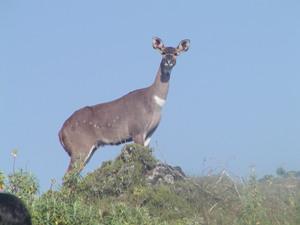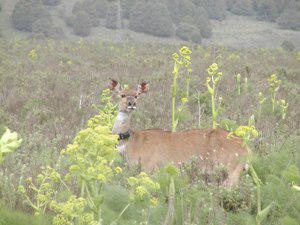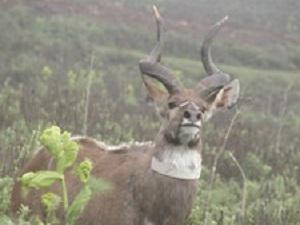Anagaw Atickem Meshesha
Other projects
23 May 2011
The Distribution Pattern and Behavioural Ecology of the Newly Identified Cryptic African Wolf
10 Feb 2014
The search on the Golden Jackal (Canis aureus) and a Genetically Distinct Lion (Panthera leo) of Ethiopia
28 Jun 2017
Studies on the Cryptic Mammal Species of Africa (Canids and Suidea Family) and Human-Carnivore Conflict Resolution Techniques
The study aims to provide reliable population estimate of the endangered mountain nyala and calibrating methods of pellet count for the population monitoring.

The charismatic mountain nyala is an endemic flagship species for the Ethiopian highlands that is now limited in its distribution to south east of the country. In spite of the endangered status of mountain nyala, the wild population is still threatened with direct and indirect human activities. Further, no detailed study has been conducted with this species and vital information that is required for effective management and conservation of this species is lacking.

In the last decades, the population estimate of mountain nyala was debated from 1000 to over 4000 by different researchers. The inconsistent estimate of the population is due to uncertainty on the distribution pattern and application of inappropriate population estimate methods. This research primarily aims to determine population estimate of mountain nyala. The out come of the study will help developing protocols for monitoring mountain nyala populations and modelling sustainable off-take rates to guide policies for the ongoing trophy hunting of the species. Due to dense forest in the steep cliff landscape coupled with shay nature of the species, any of the methods related with vision are unlikely to be realistic.

During this study, pellet count will be used for estimating population size. Pellet count will be carried out in random plots in ten core mountain nyala localities across the Bale massif that sums up to 350 km2 area which is already mapped as part of this study (Fig 1). Degradation rate will be determined from freshly dropped pellets in the wet season, early dry season and dry season in bush land, forest and open grassland. Defecation rate will be estimated from known density of population in Gasay and possibly with enclosure made in the headquarter. Finally, the density of animals in each locality will be estimated by using the equation, Da= Ds/Pi*I, where Da= Density of the animal, Ds= Total number of faecal pellets encountered per area, Pi= Mean time to decay of the pellets and I= defecation rate.